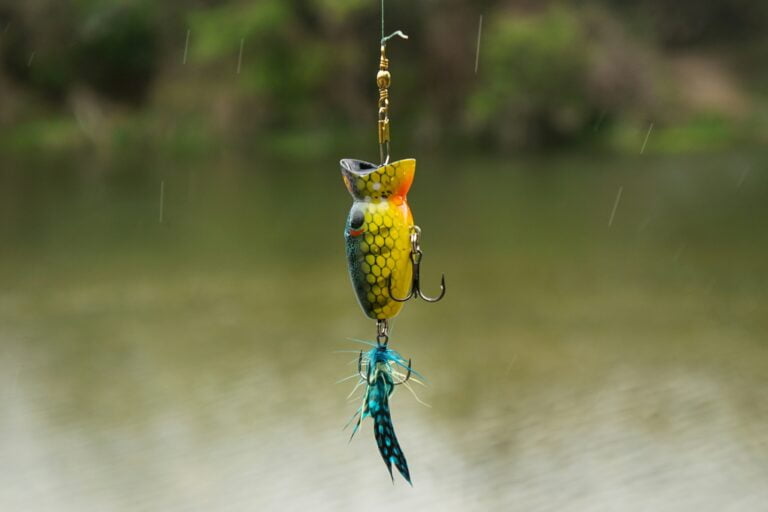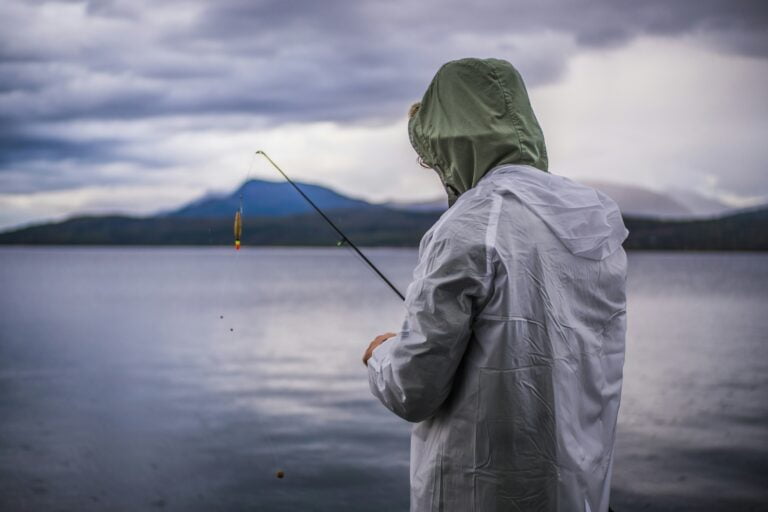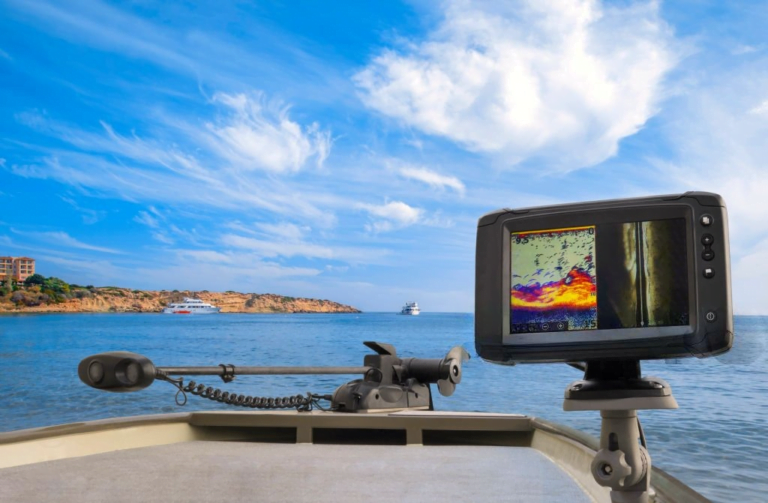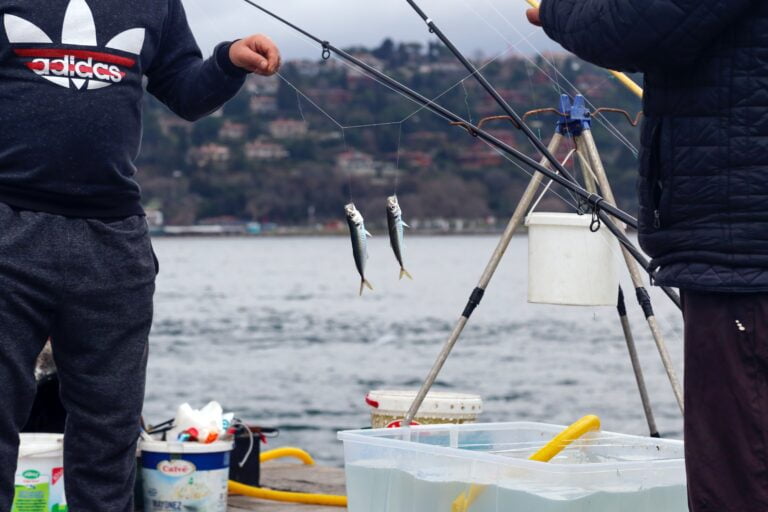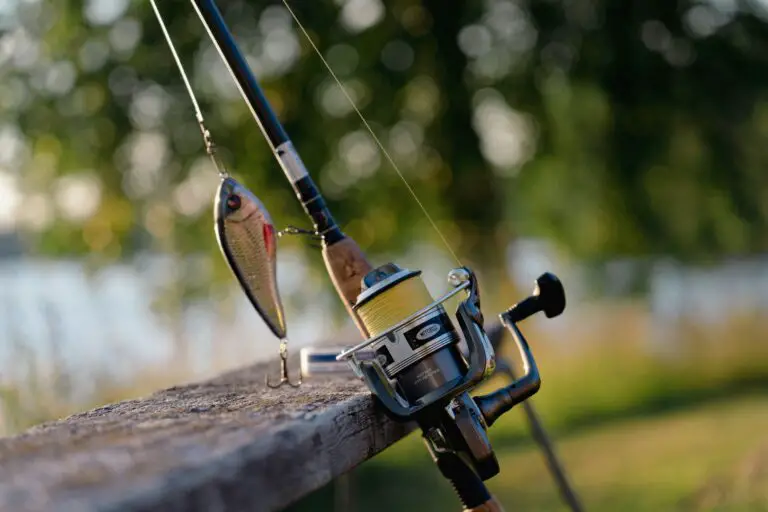Spinnerbaits for Smallmouth Bass Ultimate Guide 2024
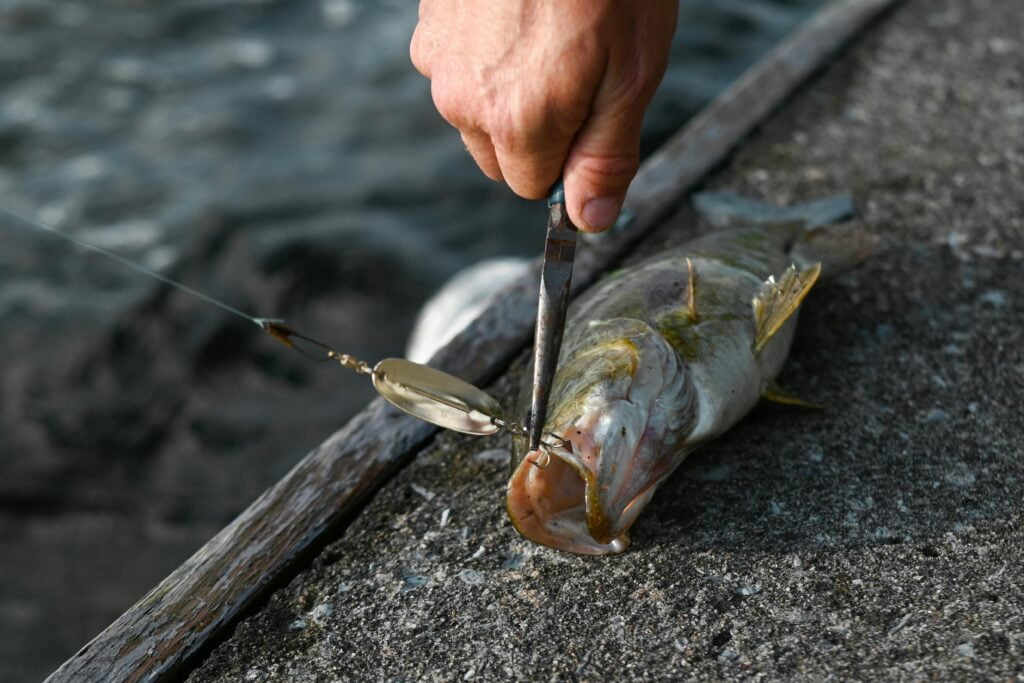
The bronze flash explodes from the depths, a smallmouth bass erupting in fury just inches out of your boat. Its effective fight bends your rod as adrenaline surges that is the coronary heart-pounding thrill of catching a smallmouth on a spinnerbait.
These specific lures are more than just a collection of metallic and plastic materials. They are a secret weapon for unlocking explosive moves from those competitive fish.
Whether you are a seasoned angler or simply starting out, spinnerbaits provide a powerful and flexible way to target smallmouth bass in a number of conditions. Let’s dive deep and discover why spinnerbaits reign superbly and the way to use them to trap the bronzeback bass of your dreams.
Spinnerbaits for Smallmouth Bass 2024

Why Spinnerbaits Are Great for Smallmouth Bass 2024
The hostile behavior of smallmouth bass is well-known. In contrast to their largermouth relatives, smallmouth are active hunters who are always searching for their next meal.This aggressive feeding behavior makes them high targets for response bait lures that simulate fleeing baitfish and motive instinctive strikes.
Spinnerbaits: The Mimicry Masters
This is where spinnerbaits excel. With their whirring blades and pulsating skirts, spinnerbaits create the practical phantasm of a fleeing baitfish.
The vibration and flash emitted by the blades mimic the frantic breakout of prey, while the tender plastic skirt provides a lifelike appearance that smallmouths cannot face up to. This irresistible mixture triggers the bass’s predatory instincts, leading to explosive strikes.
Adapting to the Water Conditions
Another benefit of spinnerbaits is their versatility. By choosing the proper blade kind and weight, you can tailor your presentation to match the water conditions.
In clean water, willow leaf blades with a herbal-colored skirt offer a subtle presentation that mimics smaller baitfish. Conversely, for stained water, Colorado blades with a brighter skirt create a stronger vibration and flash that cuts through the murk and draws bass from afar.
| Water Condition | Blade Type | Skirt Color | Advantage |
|---|---|---|---|
| Clear Water | Willow Leaf | Natural | Subtle presentation mimics smaller baitfish |
| Stained Water | Colorado | Brighter | Stronger vibration and flash cuts through murk |
What’s the best time of day to fish for smallmouth bass?
The “best time of day” to fish for smallmouth bass typically consists of the following intervals:
1. Early Morning: During sunrise, smallmouth bass are regularly active and feeding. Topwater lures or shallow-walking crankbaits may be powerful.
2. Late afternoon to night: As the sun starts to set, bass become more energetic once more. Try the use of gentle plastics, jigs, or spinnerbaits.
3. Night: Some anglers find fulfillment fishing for smallmouth bass at night. Use dark-colored lures and fish near structures.
Remember that local conditions, water temperature, and seasonal variations can also have an effect on bass behavior.
What’s the best water temperature for smallmouth bass?
Smallmouth bass determine upon water that this is between 60°F and 75°F (15.6°C and 23.9°C), although this might range depending on the season and nearby conditions. Here’s some proof:
Spring: Smallmouth bass come to be more lively while water temperatures rise from their lows at some stage in the iciness. In areas with rounder water that are shallower and between 50°F and 60°F (10°C and 15.6°C), search for them.
Springtime brings with it a growth in smallmouth bass interest as water temperatures push upward from their wintry season lows. In regions with rounder water, this is shallower, and between 50°F and 60°F (10°C and 15.6°C), search for them.
Summer: Smallmouth bass decide on warmer water, starting from 65°F to 75°F (18.3°C to 23.9°C), at some point inside the freshest months. Furthermore, as the day warms, they could float deeper.
Winter: Smallmouth bass come to be less lively in less warm water beneath 50°F (10°C).
Remember that neighborhood elements like daylight, depth, and water clarity also play a role.
Choosing the Right Spinnerbait for Smallmout
Equipping yourself with the ideal spinnerbait for the state of affairs can drastically raise your smallmouth-catching fulfillment. Here’s a breakdown of the key components and a way to pick them out:
Blade Selection: The Engine of Attraction
There are two primary blade types on a spinnerbait.
Willow Leaf: This lengthy, skinny blade offers a huge wobble and vibrates at better retrieve speeds. Perfect for clear-water programs wherein a subtle presentation mimicking smaller baitfish is favored.

Colorado: Featuring a rounder profile, this blade creates a stronger thump and vibrates at slower retrieve speeds. Ideal for stained water where extended vibration and flash are needed to entice bass.
Choosing the right blade
Willow Leaf: Use this blade for quicker retrieves in open water or while focused on suspended fish.
Colorado: Opt for this blade for slower retrieves in thicker cowls or stained water situations.
Weight Matters: Casting Distance, Depth, and Speed
The weight of your spinnerbait influences numerous components of your fishing.
Casting Distance: Heavier baits forged farther, making them perfect for masking big regions.
Retrieve Speed: Lighter baits upward thrust quicker on retrieve, while heavier baits sink faster and allow for deeper presentations.
Diving Depth: Heavier weights allow the spinnerbait to dive deeper within the water column.
Weight Selection Guide
Shallow Water (0–6 ft): Choose a lighter weight (1/4 oz. To 3/8 oz.) for better manipulation and quicker retrieves.
Mid-Depth Water (6–12 feet): Opt for a medium weight (1/2 oz.). To 3 or 4 oz.) for versatility.
Deep Water (12 ft+): Select a heavier weight (3/4 oz. To 1 ounce+) to reach deeper depths and hold bottom contact.Skirt Selection: Adding Realism
The smooth plastic skirt on a spinnerbait plays a critical role by means of:
Adding real-looking movement that mimics a baitfish’s tail.
Providing a target for the smallmouth to strike at.
Choosing a Skirt Color
Clear Water: Stick with natural colorations like white, black, or baitfish imitations for an extra subtle presentation.
Stained Water: Opt for brighter colorations like chartreuse or orange to increase growth visibility.
Trailer Hooks: Don’t Miss the Strike!
Trailer hooks are a crucial addition to spinnerbaits. They significantly improve your hookup ratio by providing an extra factor of touch for the fish to strike.
Trailer Options
Paddle Tail Trailers: These trailers add extra vibration and motion to your presentation.
Curly Tail Trailers: These trailers provide a lifelike swimming movement that entices smallmouth.
Remember: Always take a look at neighborhood rules regarding using trailer hooks.
Fishing spinnerbaits for smallmouth bass
Now that you’re armed with the suitable spinnerbait, it is time to unleash its ability on the water! Mastering retrieve strategies and focusing on the proper locations will place you on the fast track to smallmouth bass achievement.
Retrieve Techniques: Bringing Your Spinnerbait to Life
The way you retrieve your spinnerbait extensively affects how the lure behaves and draws fish. Here are 3 common techniques:
Steady Retrieve: This is a versatile method that works nicely in various situations. Simply reel the bait at a consistent pace, allowing the blades to vibrate and the skirt to flow clearly.
Burning Retrieve: This aggressive retrieve involves reeling the bait as fast as possible, just below the floor. Ideal for protecting water quickly and triggering reaction moves from aggressive smallmouth bass. Use this approach in open water or over submerged grass beds.
Stop-and-Go Retrieve: This method mimics a fleeing baitfish that pauses erratically. Reel the bait regularly for a few seconds, then abruptly prevent and permit its upward thrust barely before resuming the retrieve. This creates a sensible motion that entices curious smallmouths to strike.
Choosing the Right Retrieve
Steady Retrieve: Use this for a widespread search pattern or while focused on suspended fish.
Burning Retrieve: Opt for this in clear water or while masking massive regions to find active bass.
Stop-and-Go Retrieve: This approach works well in stained water or around cover where bass might be extra hesitant to chase.
Targeting Smallmouth with Your Spinnerbait
Smallmouth bass are ambush predators that favor areas with shape and ambush factors. Here are some prime places to locate them:
Rocky Areas: Boulders, ledges, and rocky outcrops provide exceptional ambush factors for smallmouth. Cast your spinnerbait parallel to the rocks and retrieve it with a forestall-and-pass retrieve to lure bass hiding within the crevices.
Weed Edges: The transition zone between weeds and open water gives a rich feeding floor for smallmouth. Burn your spinnerbait along the weed aspect or use a forestall-and-move retrieve to tempt bass lurking in the flowers.
Current Breaks: Areas wherein currents exchange direction or slow down create ideal feeding possibilities for smallmouth. Cast upstream and allow your spinnerbait to waft clearly with the modern for a realistic presentation.
Adjusting your presentation:
By adapting your retrieve and presentation primarily based on the unique area, you may substantially boost your chances of catching a smallmouth.
For example, fish deeper with a heavier weight and slower retrieve around rocky systems, even using a faster retrieve along weed edges to cover more water. Experiment and take a look at how the bass reacts to regulate your method.
Pro Tips for Spinnerbait Mastery
Take your spinnerbait recreation to the next level with these expert angler insights:
Tuning for Peak Performance: Spinnerbaits may be “tuned” to optimize vibration. By gently bending the wire arm that holds the blades, you may adjust their perspective and impact the vibration and wobble. Experiment to locate the sweet spot that generates the maximum attractive movement for the target situations.
Fluorocarbon Finesse: For clear water packages, recall using fluorocarbon line. This line gives superior invisibility in comparison to monofilament, giving you an aspect while concentrated on a wary smallmouth.
Reading the Water: Observe the water situation and alter your retrieval pace as a consequence. Bass tend to be more lethargic in bloodless water, so slow down your retrieve. On the other hand, they are more active in warm water, so you can maintain the pace.
Common Mistakes to Avoid
Burning Too Fast: While a burning retrieve may be effective, burning constantly can spook fish. Learn to vary your retrieval speed and take pauses to imitate a fleeing baitfish.
Trailer Hook Neglect: Don’t underestimate the electricity of trailer hooks! They significantly enhance hookup ratios. Choose a trailer that enhances your spinnerbait and retrieve method.

One-Size-Fits-All Approach: Spinnerbaits are available in numerous configurations. Adapt your choice of blade kind, weight, and skirt coloration to suit the water situation and target depth.
By learning these seasoned tips and avoiding unusual pitfalls, you will be well on your way to unlocking the total capability of spinnerbaits and experiencing the joys of catching trophy smallmouth bass!
Conclusion: Spinnerbaits for Smallmouth Bass
Spinnerbaits are an effective weapon in any smallmouth bass angler’s arsenal. Their versatility, real-looking motion, and ability to trigger reaction strikes make them a go-to trap for a variety of water situations.
By knowing the unique blade types, weights, and skirt options, you can select the suitable spinnerbait for the state of affairs.
Mastering retrieval strategies and focusing on smallmouth in their top locations will further enhance your achievement. Remember, a bit of “tuning” and averting unusual mistakes can elevate your spinnerbait recreation to an entire new level.
So, the following time you head out for smallmouth, tie on a spinnerbait and enjoy the heart-pounding thrill of this interesting fishing technique.
We’d like to pay attention to your spinnerbait successes in the remarks underneath! Share your favorite pointers, hints, and trophy catches to encourage different anglers in the pursuit of bronzeback bass!
Call to Action
Ready to put those recommendations into action and capture a few trophy smallmouths? Head right down to your neighborhood tackle store and discover the wide selection of spinnerbaits available.
For even more fishing recommendations and tricks, join our blog for weekly updates!
In the feedback underneath, proportion your favored spinnerbait manufacturers or models and tell us approximately your maximum memorable smallmouth trap on a spinnerbait.
Let’s get the communication flowing and inspire each other in our pursuit of these excellent fish!
FAQs: Spinnerbaits for Smallmouth Bass
Q: What are the advantages of spinnerbaits for smallmouth bass?
Spinnerbaits offer numerous benefits.
Reaction Strikes: Smallmouth are competitive feeders and, without problems, assault the vibration and flash of a spinnerbait, mimicking a fleeing baitfish.
Versatility: With blade type and weight options, spinnerbaits may be tailored for numerous water clarities and depths.
Search Lure: Effectively cover water and find active smallmouth with specific retrieval techniques.
Q: Which blade type is great for smallmouth bass?
A: The exceptional blade type relies on water situations.
Willow Leaf: Ideal for clear water with its diffused vibration and wobble, mimicking smaller baitfish.
Colorado: Creates a more potent vibration and flash, making it best for stained water or attracting bass from afar.
Q: What weight spinnerbait do I have to use?
A: Weight impacts casting distance, retrieve velocity, and diving intensity.
Shallow water (zero–6 ft): Choose a lighter weight (1/4 ounces). (to 3/8 ounces.) for better manipulation and faster retrieves.
Mid-Depth Water (6–12 ft): Opt for a medium weight (half of an oz.). To a few/4 ounces.) for versatility.
Deep Water (12 ft+): Select a heavier weight (3/4 oz. To one ounce+) to attain deeper depths and maintain backside touch.
Q: What color skirt must I use?
A: Skirt color choice relies on water readability.
Clear Water: Stick with herbal colorations like white, black, or baitfish imitations for a subtle presentation.
Stained Water: Opt for brighter colors like chartreuse or orange to increase visibility.
Q: Are trailer hooks essential with spinnerbaits?
A: Absolutely! Trailer hooks extensively improve your hookup ratio by imparting an extra factor of touch for the fish to strike. Popular options include paddle-tail or curly-tail trailers.
Q: What are a few not-unusual mistakes to keep away from with spinnerbaits?
A: Here are some errors to be privy to:
Retrieving too quickly: Burning continuously can spook fish. Vary your retrieval pace and include pauses.
No trailer hook: Don’t forget trailer hooks! They appreciably improve hookup ratios.
One-size-suits-all technique: Adapt your blade kind, weight, and skirt color to healthy water situations and goal intensity.
By knowing how to use those FAQs and the facts in this blog post, you’ll be well on your way to using spinnerbaits effectively to capture trophy smallmouth bass!

